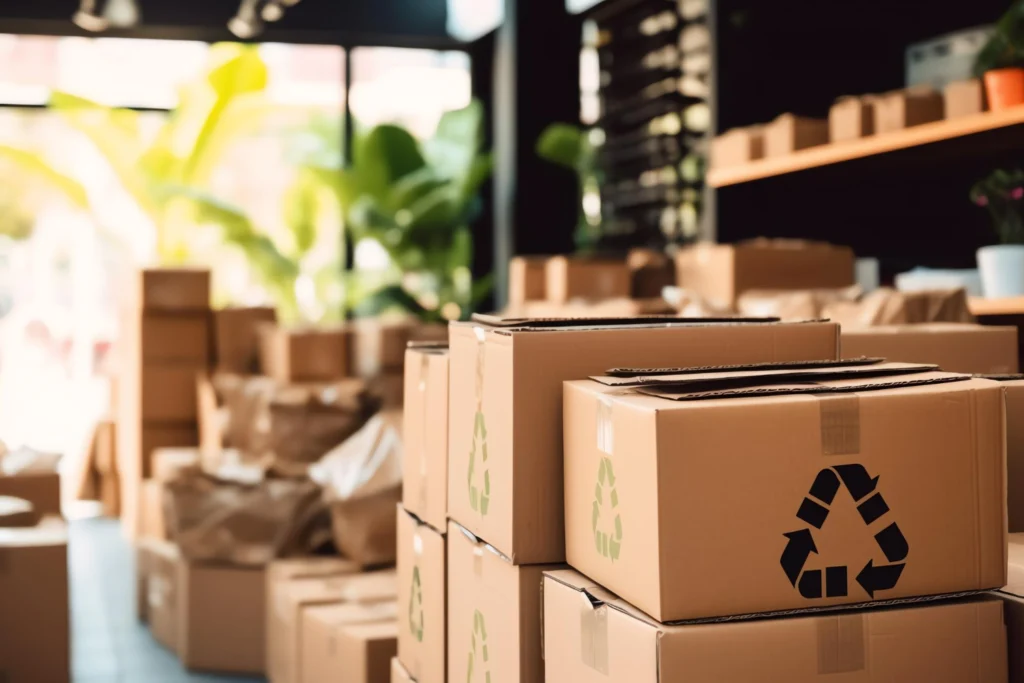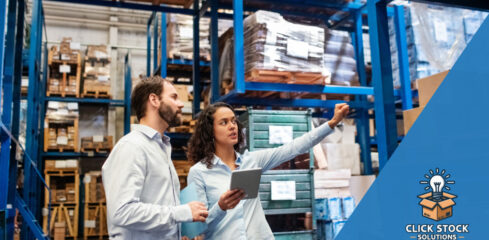
Consumers expect retail brands to be standard-bearers for the planet, but as far as sustainability goes, especially at scale, it remains an elusive goal. While the challenge is complex, there are concrete solutions within reach – especially in ecommerce operations management, where small changes can accumulate to significantly reduce environmental impacts. Armed with modern tools for managing inventory and warehousing, know that you can reduce waste and boost efficiency to help your business achieve sustainability goals.
Consumers want brands to go beyond sustainability buzzwords
Demand is rising for companies to lead the way on sustainability – and increasingly, consumers are willing to spend more for goods and services from brands who are working to reduce their environmental impacts. The Baker Retailing Center at the Wharton School of Business found that sustainability is more important than brand names as a purchase factor, and 68% of consumers overall would pay a premium for sustainable goods. Specifically, U.S. consumers are willing to pay 11% over the regular price for sustainably-produced products, according to Bain.
Retailers are responding to this growing demand with a variety of initiatives, including offering sustainably-made products, earning industry certifications to boost their eco-friendly credentials, and backing environmental causes their customers care about.
They’re also overhauling operations to increase efficiency and reduce environmental impact – and consumers increasingly appreciate these behind-the-scenes efforts. From brand messaging that illustrates how companies are enacting earth-friendly practices in their business to certification bodies such as B Corp who are starting to scrutinize global supply chains as part of the credentialing process, companies are trying to level up to their consumers’ expectations as best they can. As buyers seek out transparency in product sourcing and consider the environmental impact of services like overnight order delivery, their support for sustainable practices is growing. For example, PwC found that half of consumers would pay up to 10% extra for brands with a more sustainable supply chain.
Sustainability starts with operational efficiency
To achieve these operational gains, you need more than high-minded intentions; you need the flow of goods to be impeccably orchestrated and tracked. If you’re still using clipboards and static spreadsheets to manage ecommerce operations, you likely lack the real-time data required to make the right decisions when it comes to packaging, ordering stock, and fulfillment methods and, therefore, are more susceptible to added waste and a larger carbon footprint (more on that below).
By leveraging modern tools such as online inventory management systems (IMS), barcoding and real-time fulfillment tracking, you can centralize information, analyze and forecast accurately, and achieve the efficiency gains that lead to a more sustainable operation.
Let’s look at some ways your business can adopt sustainable practices:
1. Reduce overstocks
Holding excess inventory isn’t just costly to the bottom line; there are environmental costs, too. Placing larger orders than necessary from suppliers requires more raw materials and packaging and uses more fuel for shipments. At the warehouse, the additional space you need to store large quantities of inventory translates into more energy spent on heating and cooling. And if unsold goods are ultimately destroyed, that’s more waste going to the landfill.
Efficient inventory management practices can prevent these harms by helping accurately forecast demand and reoder. By predicting when and how much shoppers will order, you can reduce overage with a lean inventory strategy, especially for fast-moving goods or perishables. By setting reorder points and min/max levels to carry just the right amount of safety stock, you can avoid a pileup of unsold merchandise.
2. Rethink your packaging
The boxes, bottles, tubes, wraps and/or bags you use to package your merchandise are among the most visible ways your brand can communicate a commitment to sustainability. Consumers are on the lookout for eco-friendly packaging; while shelf life and hygiene are topmost priorities for U.S. shoppers, four in 10 say the environmental impact of packaging is extremely or very important when making purchase decisions, McKinsey found.
The market is responding to this interest with a bounty of fresh packaging options. In addition to new designs made from recyclable or even biodegradable materials, companies are offering reusable packaging customers return to stores or producers. Brands from Starbucks to Lush Cosmetics have experimented with packaging take-back programs to boost circularity.
In addition to considering raw materials, factor in the weight and dimensions of your package to reduce transportation impacts. While shaving a few ounces off a single package may not seem significant, the savings add up over time and translate into significant benefits for the environment.
3. Create bundles and kits to move slow-selling inventory
Gift sets, starter kits, and accessory packs are clever merchandising ideas that can introduce new products to customers and add value to your product listings…and they can help reduce waste, too. By grouping popular items with products that are moving more slowly, you can avoid a glut of inventory. In the case of perishable goods or technology accessories, bundling helps ensure that you don’t have to offload aging or obsolete products at deep discount – or, worse, send them to the landfill.
Additionally, packaging for bundles and kits helps reduce your carbon footprint. By shipping items together rather than individually, you conserve packaging materials, reduce supply needs and reduce transportation weight.
A modern IMS eases creation of bundles and kits by closely tracking items both separately and as components. You can create physical kits with a single SKU or a virtual bundle assembled from multiple SKUs and track the items as part of your routine cycle count and stock take processes – without needing to designate and physically set aside (and potentially waste) inventory specifically for bundling.
4. Streamline fulfillment
The distance and mode by which goods travel to reach customers have significant environmental repercussions, as trucks and cargo planes generate carbon emissions. Within the U.S., 30% of goods travel at least 500 miles to reach their destinations. Finding the shortest distance between customers and products can help that number drop, reducing environmental impact. An IMS in tandem with robust fulfillment coordination can help you achieve the most sustainable mix.
Locate inventory as close as possible to regions where demand is strongest. In addition to warehouses and distribution centers, get creative with locations where stock can be carried. If you operate as a third-party seller on Amazon or Walmart, research their built-in fulfillment services to see if you can piggyback on their vast and efficient delivery networks. If you have physical stores, you can not only offer order pickup services, but you can leverage locations as local shipping depots to minimize last-mile delivery distances.
In addition to reducing miles traveled, encourage shoppers to reconsider their need for speed. Overnight delivery services afford less time to pack planes, trucks and vans as efficiently as possible, resulting in more vehicles on the road. Offer and promote lower-cost or free “green shipping” options with longer delivery timeframes, and encourage shoppers to hold off on shipment until all the items in their order can be packaged and sent together. Eight in 10 consumers are wlliing to wait an extra day to make their shipments more affordable, according to Digital Commerce 360.
5. Empower recommerce
Returns are viewed as a costly headache, and historically, 40% of returned merchandise has ended up in landfills, making them an ecological liability, too. But that reality may be changing, thanks to improvements in IMS and logistics technologies and growing consumer acceptance of a new mode of shopping: recommerce.
While garage sales and thrift stores have been around forever, resale ecommerce, aka “recommerce,” is a more recent phenomenon. Thredup reports that the number of U.S. retailers offering resale online has more than tripled just since 2021, and the total U.S. resale market is estimated at $175 billion, according to the Harvard Business Review.
While launching and promoting resale as a new business for your brand is a major endeavor, you can start small by increasing the amount of returned merchandise you offer for sale – and an IMS can help. You can assign returned items in good condition to a specific bin or lot and merchandise them as a category online just as you would new stock. You can also use serialization to enable resale of goods such as electronics with specific product IDs, providing consumers reassurance that their second-hand purchases are legitimate and compatible with their other gadgets.
Reduce your impact with streamlined operations
Retailers are redoubling their efforts at sustainability, and while far-reaching changes are still needed, it’s possible to make substantial gains now. You can optimize operations to sell through stock more efficiently, reorder judiciously, and resell returned merchandise. You can reduce waste and boost operational efficiencies, moving the needle on sustainability goals and benefiting the bottom line in the process.
To uncover how your company can achieve greater operational efficiency, schedule a demo or start a free, 14-day trial.





